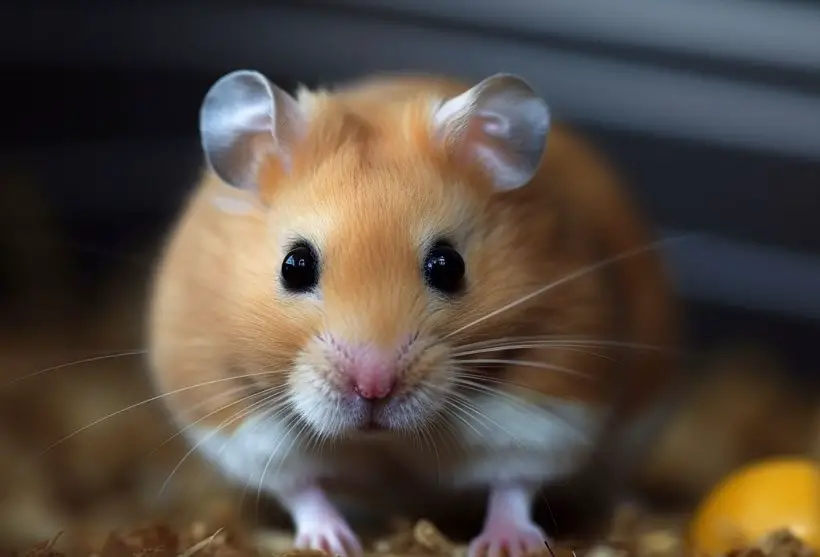How to Keep Hamsters Cool- The Complete Know-Hows
As the scorching summer days arrive, your hamster becomes more and more restless. These tiny creatures are very sensitive to high temperatures. And it will take only 5 minutes of direct sun to give them a heat stroke.
So how to keep hamsters cool? Keep the hamster in an air-conditioned room or turn on the fans if possible. Place frozen water bottles, frozen towels, and mugs inside its cage. Add extra bedding of aspen shavings and feed the hamster more water and hydrating food.
All these measures will protect your furry pet from high temperatures. Let’s dive into the details and find out what temperatures are most comfortable for your hamster. We will also learn more about the different ways of keeping your hamster cool.
What Is the Optimum Temperature for Keeping Hamsters?
For most hamster species, the ideal temperature range for their habitat is 68 to 72 degrees Fahrenheit (20 to 22 degrees Celsius).
However, if you have a Winter White or Siberian hamster, it will remain the most comfortable at 65 to 70 degrees Fahrenheit (18 to 21 Degrees Celsius). This particular species comes from a colder environment. The temperature differences don’t seem notable, though.

Nevertheless, the slightest temperature changes should be considered carefully as hamsters are highly sensitive to temperature changes. So, when the temperature reaches as high as 86 degrees Fahrenheit (30 degrees Celsius) or more, you must keep it cool.
Otherwise, it will overheat, which might lead to heatstroke. In that case, you must take it to your vet.
Below are some signs of heatstroke in hamsters:
- Frequent panting
- The tongue becomes bright red
- Slobbering
- Eating less or not eating at all
- Taking short and quick breaths
- Being very sleepy
- Depression
- Lying flat on their belly
- Weakness
- Lack of regular activity
- Convulsions
- Falling unconscious
10 Ways to Keep Your Hamster Cool
Hamsters are mammals and they react the same way to heat as humans. Wild hamsters can easily move to a colder location if the temperature becomes unbearable. However, caged pets can’t change their habitat, so it’s up to you to keep them comfortable and protect them from heat.

Here’s how you can keep your hamster cool:
1. Place the Cage Away from Heat Source
The most comfortable habitat for your pet is in a shady area with proper air circulation.
- Keep the cage of your hamster away from direct sunlight.
- If there’s any other source of heat such as a gas burner or heater, place it in a location where the heat easily dissipates and doesn’t reach the hamster.
- Close your curtains to avoid direct sunlight and keep the house cooler.
2. Keep It in An Air-Conditioned Room
Your hamster will love being in an air-conditioned room on hot summer days.

- However, keeping it in an airy room where the hot air can easily pass through also be a good place to keep your hamster.
- Turn on the fans to make the room cool.
- Your basement or bathroom can also be a good place if there’s an adjacent window.
3. Choose A Wired Cage
Besides picking an airy room, you must choose a well-ventilated cage.
- A wired cage is a better choice for the summer days. Such cages have large holes so that heat and air can easily pass through.
- You can also go with cages that have bars. Glass or plastic bars are the best options in this as these materials don’t conduct heat.
4. Place Frozen Items Inside the Cage

Frozen water bottles, towels, and mugs will help the hamster a lot when it feels excessive heat.
- Keep an empty water bottle and wrap it with a cloth. Place it inside the freezer and wait until it becomes solid. Put the bottle in your hamster’s cage so that it can rest its body against the cold bottle.
- A wet towel will also be a nice cool spot where the hamster can rest.
- You can also place a ceramic mug inside the freezer so that your pet can jump into it and take a comfortable, cool nap when it’s too hot inside the cage.
5. Drape the Cage with A Frozen Towel
Place a cotton towel inside your refrigerator and allow it to completely freeze. Place the frozen towel over the cage so that it covers at least two sides of the cage. It will work as a barrier between the inside and outside environment of the cage.
So, your hamster will be protected from excessive heat. Remember, the other sides of the cage must remain uncovered to ensure proper air circulation inside the hamster’s cage.
6. Ensure Sufficient Cold Water
Like other mammals, hamsters need plenty of water during the summer to regulate their body temperatures. As hamsters don’t sweat, even the slightest temperature change can make them dehydrated. So, ensure sufficient water supply for your hamster during the summer days.
It’s better to give cool water as it will help your little pet relax and stay cool for long hours. For every 100 grams of body weight, you need to provide 10 milliliters of water. Let’s say your hamster is 200 grams, so it will need only 4 to 5 teaspoons of water per day.
7. Give Hydrating Food
When the temperature is too high, your hamster will quickly become dehydrated. Besides providing sufficient water, you can give it hydrating food items that contain plenty of water. This way, there will be less chances of dehydration.

Cucumber, celery, peeled apple, zucchini, lettuce, carrot, leafy greens, and water-heavy fruits can be the best treat for your hamster during the hot summer days.
Try to avoid dry food as they make the hamster thirsty. However, if you’re willing to give dry items, consider keeping them in the freezer first. Barley, flax seeds, oats, peanuts, cashews, etc., can be easily frozen and your pet will appreciate them even more if the food items are cold.
8. Use Aspen Shavings for Bedding
While combating high temperatures, the material and depth of your hamster bedding are two very important factors. In this case, using paper or cardboard during winter is a good idea, but using them in summer is a big no.
However, Aspen is a wood-like material that doesn’t retain much heat. In fact, it’s quite similar to the natural bedding of wild hamsters.
Another thing you need to consider is the bedding depth. Deeper beddings are typically cooler as the heat doesn’t easily reach the bottom. In contrast, thinner beddings become hot very quickly.
9. Limit Its Activity
If the temperature is high outside, don’t play with your hamster and limit its other activities too. You need to pay special attention to it during the peak hours in the noon when the sun is bright.
Remove the wheelers, ladders, and other toys from the cage and allow the hamster to relax during the day. Choose early mornings or late nights to handle the hamster. Avoid taking it outside, especially in a non-air-conditioned vehicle.

10. Provide Frozen Bath Sand
Your hamster will love to have a cold bath on a hot sunny day. All you have to do is take the bath sand in a Ziploc bag and place it inside your refrigerator.
Stir the sand occasionally so that it’s completely cold. Take about one bowl of sand from the bag and keep it inside the hamster’s cage. Make sure you remove the sand once it goes back to a normal temperature.
Keeping your hamster cool is important for their health and well-being, especially during hot weather. But there are other things you should be aware of as well. For example, if you’re concerned about fleas on your hamster, our guide on whether hamsters can get fleas offers valuable information on how to protect your pet. Additionally, it’s important to monitor your hamster’s stress levels, as stress can impact their overall health. Our guide on how to tell if your hamster is stressed provides helpful tips on how to identify stress in your pet and what to do about it. By following these guides, you’ll be able to ensure your hamster is healthy and happy.Frequently Asked Questions
Do you want to know a little more? Have your eyes on this section
Q: Can you give hamsters ice cubes?
No, it’s not recommended to give hamsters ice cubes directly as they tend to chew things. Ice is too cold and hard for the hamster’s body and teeth. So, it’s better to mix the ice cubes in their drinking water instead of directly placing them inside the cage.
Q: Should I cover my hamster’s cage at night?
You can cover the hamster cage with a wet towel only for a few hours at night. As hamsters are nocturnal, making the cage darker for the whole night will hamper their sleep and encourage them to stay awake.
Q: Can hamsters survive in any temperature?
No, hamsters are extremely sensitive to temperature changes and both heat and cold can become deadly for them. Most hamster species are comfortable at 65° to 75° Fahrenheit. Anything higher or lower than that will make them uncomfortable.
Wrapping Up!
So, now you know how to keep hamsters cool in summer. Maintaining the perfect temperature inside the hamster’s cage can be difficult as too much heat or cold can make it sick. So, once you follow a cooling tip, make sure to check how your pet is coping with it.
If it seems uncomfortable and the environment becomes too cold, quickly remove the hamster from the cage and keep it in an airy room.
Meta:
How to keep hamsters cool? What temperature is too hot for hamsters? Can you give it cold water and food? Keep reading to get all the answers!




